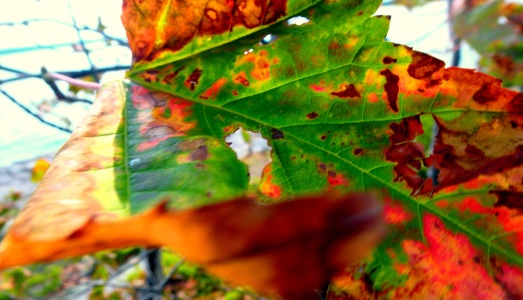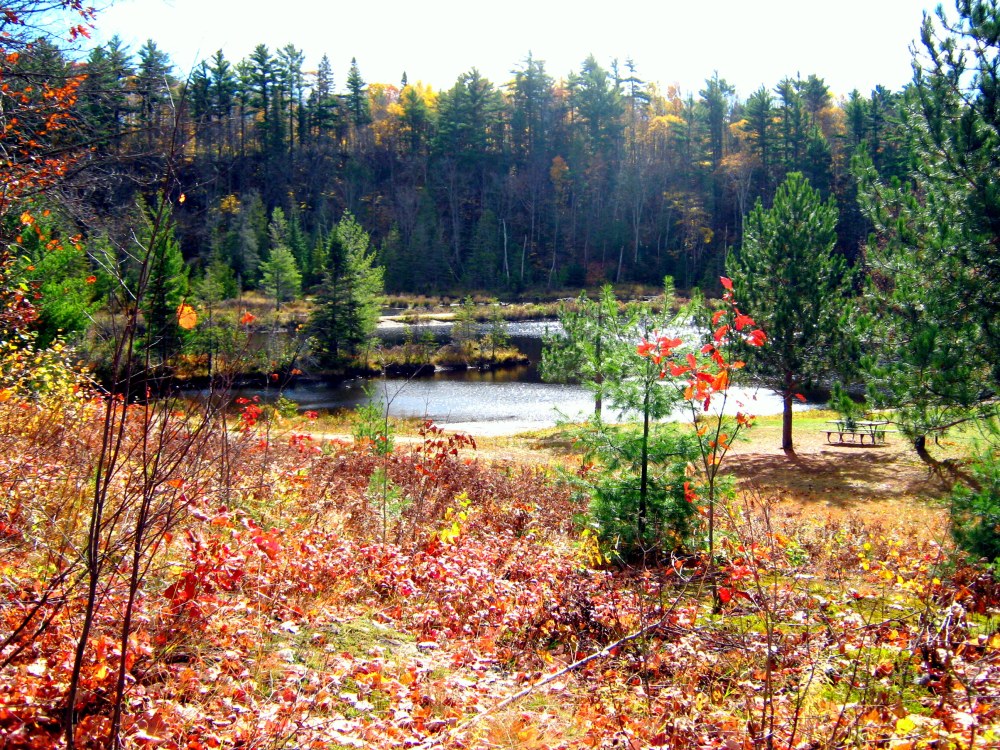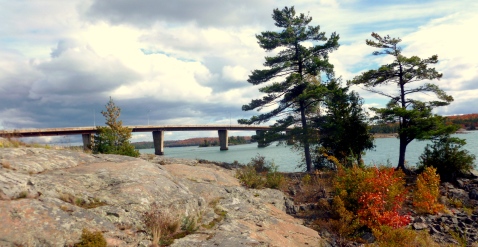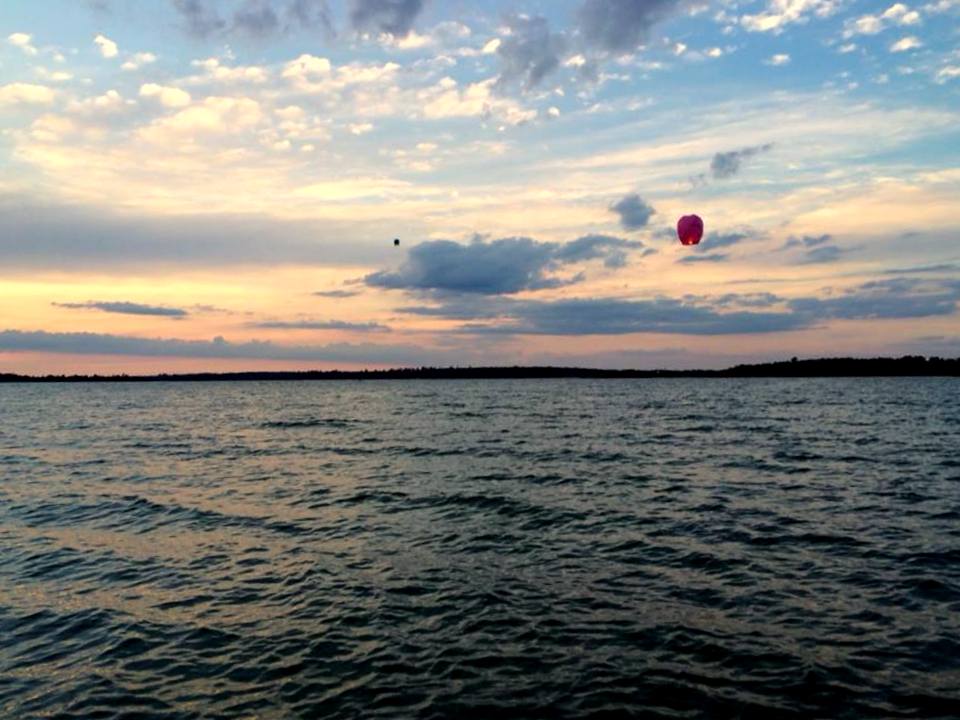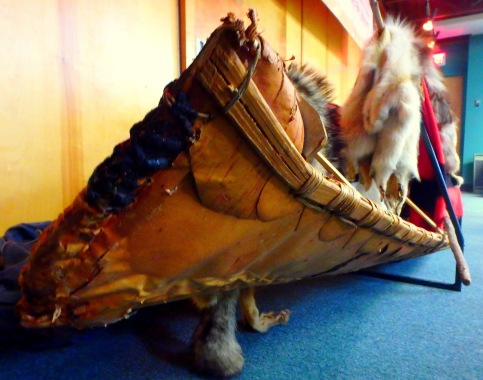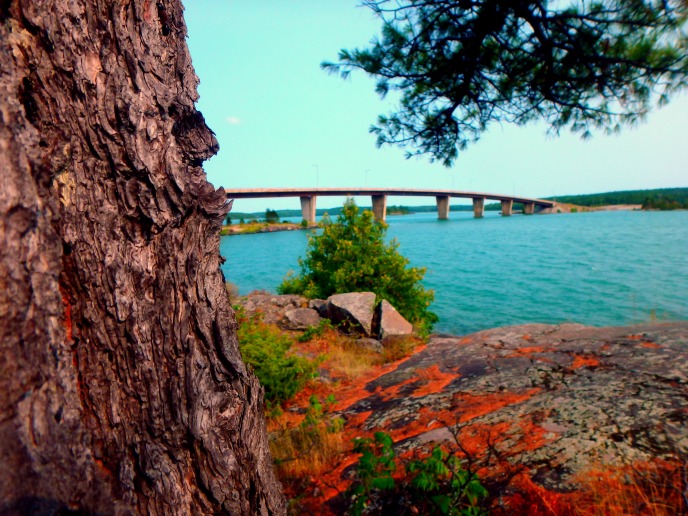Top 10 Places to See the Fall Colours in Algoma Country
While September might be a student’s nightmare due to the dreaded back to school blues, for me, it stands as one of my absolute favourite months. September brings warm days and cool nights, perfect for camping and sleeping out under the stars. The waters in the Great Lakes are still warm enough to enjoy a dip, and summer tourists have returned back to their homes, leaving trails and popular destination spots quieter. Most impressively, the Maple trees transition from their evergreen colours to brilliant shades of orange, red, yellow, and even purple by mid-September. Northern Ontario becomes a sea of bright shades and hues, a colour chaser’s paradise.
Across Ontario, there are plenty of places to see the changing of the leaves. However, Northern Ontario promises spectacular views against the backdrop of great bodies of water, including Lake Superior. Below is a list of some of the top 10 places (in no particular order) that colour chasers can view the changing of the Maple trees in the Algoma region while also enjoying breathtaking views of Northern Ontario water. This list is not exhaustive, but instead, a list of my personal favourite hotspots.
Before heading out on the trails, be sure to check out Ontario Park’s weekly Fall Colour Report, which highlights optimal viewing for colour chasers across the Province of Ontario.
Located only 45 minutes north of Sault Ste. Marie, the Pancake Bay Lookout Trail is an easy six-kilometre trail which boasts a scenic lookout over mighty Lake Superior, the white sands of Pancake Bay, and the graveyard of the Great Lakes, where the historic Edmund Fitzgerald met her demise on 10 November 1975. After climbing metal and wooden stairs to reach the worn platforms which dot the top of a cliffed mountain, the lookout is always worth the hike – no matter the season and the weather. Once at the lookout, viewers can see for miles. To the left stretches the Boreal Forest and continues onto the right. In front, down below, lies the TransCanada Highway, and a body of freshwater encompasses the horizon. In the fall months, the trees adorn their fall colours, appearing as a sea of bright hues jarring out of the Canadian Shield, stopping abruptly for the pure white sand which meets the cool, blue waters. The Lookout Trail truly is the perfect fall hike.
Located only 15 minutes outside of Sault Ste. Marie exists the Robertson Cliffs and King Mountain. Jutting out of the lowlands in Goulais (pronounced “Goo-lee”) stands these picturesque mountains, which offer panoramic views of the boreal forest, the Trans Canadian Highway, and mighty Lake Superior. Many label the Robertson Cliffs trail as difficult. However, the trail is rather simple, except for the first kilometre, in which hikers climb approximately 180 metres (or 600 feet) in elevation to reach the top of the mountain, where they are greeted with five impressive lookouts, perfect for viewing the fall colours. The Robertson Cliffs Trail also offers up a small waterfall viewing opportunity. This is a great hike for those looking to escape the city for a few hours without wanting to venture far.
- Nokomis Trail
Located across from Old Woman Bay at the northern boundary of Lake Superior Provincial Park (approximately 20 minutes south of Wawa, Ontario), the Nokomis Trail is a moderately difficult five-kilometre trail system that provides five stunning lookouts, sky high above Old Woman Bay, one of the most popular stops within Lake Superior Provincial Park. Viewers can enjoy breathtaking views of the Old Woman River, Old Woman Bay, and the rolling glacial mountains, which appear as a sea of bright colour in the fall months. On a windy day, hikers can experience first hand the legacy of mighty Superior, as waves crash 10 feet high at Old Woman Bay. (Stay tuned for a detailed trail report on the Nokomis Trail!)
- Highway 129 to Chapleau
As much as I love hiking, I also love taking fall drives. Consider taking a drive along Highway 129 from Thessalon, Ontario to Chapleau, Ontario. Over two hours in length one way, the drive offers views of uninterrupted Northern Ontario. Drivers get close – sometimes too close – to the edge of the Mississaugi River, as the highway hugs the river, as well as other lakes and tributaries. As you drive along, enjoy the winding and rolling of the highway, as well as the never-ending rolling of the mountains. Onlookers can also enjoy glimpses of the remains of a devastating forest fire, Pig Pen Chutes, and the Chapleau Game Preserve, the largest game preserve in Ontario. With few towns and communities on this solitary highway, your chance of seeing wildlife as well as the fall colours is extremely high. Be sure to get gas before leaving Thessalon, Ontario, however; there are very few opportunities to gas up along the way!
- Hiawatha Highlands
Located within the City of Sault Ste. Marie, off of Fifth Line, Hiawatha Highlands is one of my favourite year-round stomping grounds. With amazing trails for biking, hiking, and running in the spring, summer, and fall, and strenuous cross-country ski tracks and snowshoe paths in the winter, Hiawatha is every Saulite’s favourite recreational place within the city limits. Trails range from one-kilometre in length to over 15-kilometres, and can be anything from easy to moderately difficult. The Crystal Falls, a gorge, and various lookout vantage points also provide trail users with a great views of the city and vast wilderness. To me, Hiawatha is perhaps one of the best places to view the fall colours, since the majority of the trails are lined with thousands of Maple trees. Trail users can spend anywhere from an hour to a full day exploring the Hiawatha Highlands.
No matter the season, you can’t go wrong visiting St. Joseph Island. The majority of St. Joseph’s Island’s tree population consists of Maple trees, so a visit in the fall is sure to impress. Take a drive around the entire island on Highway 548, take in the shipping channel at Sailors’ Encampment, visit a quaint store in Richards Landing, or hike the Mountainview Centennial Grounds’ trails in Jocelyn Township. You can stay for an hour, a day, or overnight. And there’s no better home-cooked meal than on St. Joseph Island.
- Highway 17 North to Wawa
Did you know that the Lake Superior Circle Tour is considered one of the top 10 drives in Canada? The trip around Lake Superior is absolutely spectacular. However, not everyone has the time to make a 16-hour or more drive around Lake Superior. If you do, however, I highly recommend it. For those of us who can’t spare that much time, consider the drive from Sault Ste. Marie, Ontario to Wawa, Ontario. Approximately 220 kilometres (137 miles), this two-hour drive will not disappoint and will deliver spectacular views of the Boreal Forest, the Canadian Shield, and the rugged coastline of Lake Superior. Two waterfalls – the Chippewa Falls and Pinguisibi (Sand River) Falls will also highlight the trip. And for food lovers, there are plenty of options for a good home-cooked meal along the trip. And did I mention there are some good arts and crafts stores as well? The drive to Wawa is also a great alternative to the Agawa Canyon Tour Train, for those on a tighter budget. Onlookers will enjoy similar views that they would see on the Tour Train, except for the view of the Agawa Canyon itself; however, they will get to enjoy Lake Superior. If you do take this drive, be sure to have a full tank of gas – there are no gas opportunities between Batchewana Bay and Wawa, Ontario.
- Agawa Canyon Tour Train
The Agawa Canyon Tour Train is the most popular tourist stop within Sault Ste. Marie. Every year, thousands from around the globe visit the Sault to climb aboard the Algoma Central Railway (ACR) and head to the Agawa Canyon. Visitors can enjoy a full day onboard the train in refurbished cabins, taking in the sites along the rails, including rivers and streams, windfarms, bridges and trusses, and vast mountainous landscapes. Once at the canyon, train travellers have just under two hours to explore the Agawa Canyon, enjoy lunch, hike over 300 steps to the lookout, or visit two impressive waterfalls. The Agawa Canyon Tour Train is truly impressive and promises views nature enthusiasts can see no other way. The Agawa Canyon is visible only via the Agawa Canyon Tour Train. For extreme backcountry hikers, an almost non-existent trail can also be hiked to the Canyon. Warning: not many people have successfully hiked this extremely difficult trek. For more information, please visit the Agawa Canyon Tour Train website.
- Awausee Trail
Unlike the Nokomis Trail in Lake Superior Provincial Park, the Awausee Trail is difficult and demands a higher level of expertise and physical ability. 10 kilometres long, the trail is located only minutes from the Agawa River and Agawa Bay Visitor Centre at the south entrance of Lake Superior Provincial Park. For the first two kilometres of the trail, hikers climb to an elevation greater than 300 metres above Lake Superior. The hike up the mountain is agonizing, but the views are unlike anything you’ve ever seen – I promise. Few trails in the Algoma region reach the same elevation as the Awausee Trail. Therefore, before heading out for this hike, check the weather carefully: schedule your hike on a clear, sunny day. I hiked this trail in a thunderstorm and couldn’t see through the clouds at three of the five lookout posts.
Next to the wonder that is Old Woman Bay, Pinguisibi River within Lake Superior Provincial Park sparks within me an incredible sense of awe and inspiration. It is undoubtedly, my most cherished spot within Ontario. More commonly known as the Sand River due to its English translation from Anishinaabemowin (Ojibwa language), the Pinguisibi River provides access to the most reachable waterfall and its three chutes within Lake Superior Provincial Park. So accessible in fact, that it can be seen from the Trans-Canada Highway, making it one of the most popular stops within the park, but also the most popular hiking trail. Although it is considered a moderately difficult trail by the park’s standards, this six-kilometre linear hike is an easy trek, perfect for families, adventure enthusiasts, and those both young and old. Well maintained by the interior provincial park staff, equipped with a well-trodden trail, bridges, and wooden steps, the Pinguisibi River is a must-see stop for those travelling along Highway 17. Plus, if you’re an angler, this river never disappoints.
What’s your favourite place to see the fall colours?
Want to know more about any of these locations or to see pictures from my past travels to these places? Contact me directly at thenorthjunction@hotmail.com or comment on this post.
